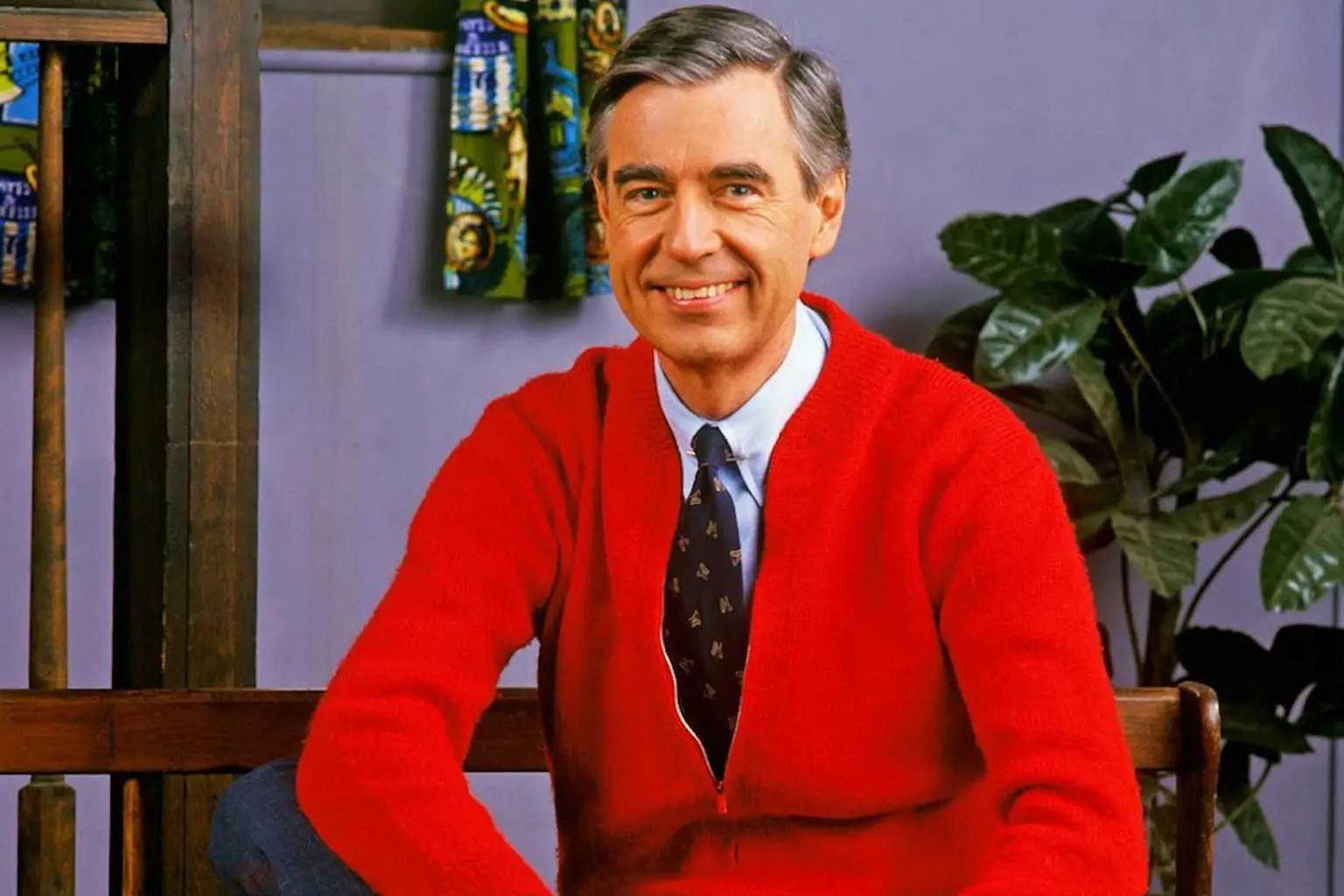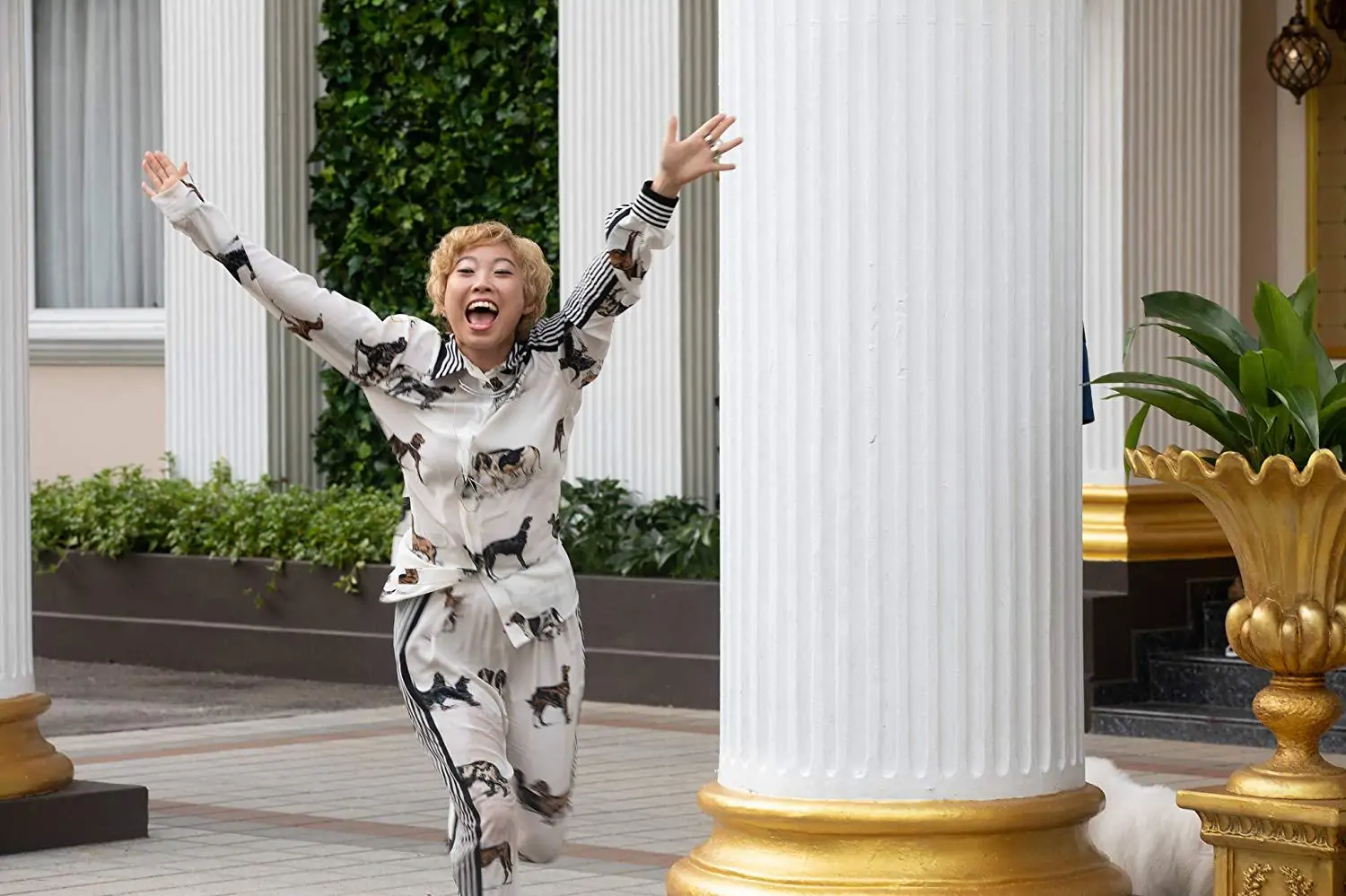
Fred Rogers was in his early 20s when he first turned on a television set. It was the late 1940s and the medium was just picking up steam. His parents had bought the cube-like state-of-the-art device and placed it in their living room in accord with many other middle-class American families.
Rogers had grown up, by many accounts, a weird kid.
He was quiet and shy, with an atypically empathetic disposition for someone his age. He had just finished college and was about to enroll in a seminary to become a minister, but what Rogers saw when he turned on that set sent a shock wave of indignant conviction through his young, lanky body.
Pies being thrown at people’s faces. People hitting other people and abusing them. Slapping. Punching. Demeaning. Sure, it might have all been in the name of comedy, but there had to be a better way to use this influential medium that was so rapidly becoming the very centerpiece of the American household.
Rogers knew what he was imagining was different, maybe even weird, but it didn’t matter. Shortly after this virgin viewing experience, he decided he himself would pursue a career in television. Several years later a different type of program beamed into living room TV sets. It was a weird program, full of puppets and trolleys and brightly colored cardigans. Armed with those strange props and a simple but profound message, Mister Rogers’ Neighborhood revolutionized television forever and became one of the most successful children’s programs of all time.
More fascinating and less known is that the beloved series was briefly canceled in 1967 due to a lack of funding.
That’s right. Mister Rogers got the ax.
But something happened: A small but vocal public demanded he be put back on the air. They wrote letters, made phone calls, went door-to-door collecting funds and organized. The movement Rogers had begun wouldn’t be stopped so easily. In 1967 the Sears Roebuck Foundation picked up the bill to fund future episodes of Mister Rogers’ Neighborhood, a decision that allowed the program to be seen in more households across the nation.
A few years later, after President Nixon proposed budget cuts to public television, the quiet, lanky neighbor sojourned to Washington, D.C. to testify in front of the U.S. Senate Subcommittee on Communications and make a passionate case for public television and shows like his. Sitting in front of Senator John O. Pastore, the chairman of this particular subcommittee, he waded into a respectful but determined defense.
“This is what I give. I give an expression of care every day to each child, to help him realize that he is unique. I end the program by saying, ‘You’ve made this day a special day, by just your being you. I like you just the way you are.’”
Rogers, a master of show-and-tell, didn’t just stop there, though.
“Could I tell you the words of one of the songs, which I feel is very important?” he inquired.
He then launched into one of his numbers from the show, “What Do You Do with the Mad That You Feel?”
Pastore, who was known around Washington for being an ornery character, had apparently never seen Rogers’s show. By the time he was done, the chairman was visibly moved.
“I’m supposed to be a pretty tough guy,” he replied. “And this is the first time I’ve had goose bumps for the last two days … Looks like you just earned the $20 million.”
As a kid, I remember bringing my bowl of Frosted Flakes into the living room in the mornings and tuning into the old man in the bright cardigan, trying to restrain myself from fixating so much on the world he was inviting me into that I didn’t keep a close eye on my Frosted Flake-to-milk ratio, lest I incur unwanted sogginess.
My favorite part of each episode was when the trolley would whistle its way into Mr. Rogers’ living room. It meant a new adventure was on the way, an escape from the normal, a window into imagination and make-believe.
As I got older, though, and watched my younger siblings do the Mr. Rogers Frosted Flakes-and-milk juggling act (they were amateurs compared to my former glory), I began to question some of Mr. Rogers’s practices, particularly when it came to the trolley. For instance, watch any episode and you’ll notice his arm reaching down slightly out of the shot to press a button that obviously triggers the trolley’s arrival.
I remember thinking that if I ever had the chance to meet Rogers, I would tell him, “Fred, you’re obviously quite successful. Don’t you think it’s about time to hire an intern or someone to press the trolley button for you? Or maybe a wireless remote control that you hid up your sleeve?”
But lately I think I get it.
Rogers didn’t need help making the trolley move. He knew exactly what he was doing. He knew that kids were so tuned in to his unwavering love and care for their imaginations, their futures and their neighborhoods that he didn’t need to rely on any extra machines or gadgets for help. He had mastered the art of human connection.
His brand of loving your neighbor as yourself, remembering you’re unique even if you don’t feel that you are, and imagining the possibilities of a world without hate was as transparent as his low-budget living room set. He lived what he preached from that living room, and he treated each of his viewers like they were the only person in it.
He knew what made him weird and owned it, without excuse or apology. Everything else, everything unimportant to his point of view, faded into the background. It was all the same to him.
Today we possess the most advanced vehicles ever invented, the latest and greatest remote controls to move the trolley. But without that human connection, that one-of-a-kind fingerprint to press the button and steer our imaginations forward, we will have settled for a culture run by robots.
Rogers knew this early on, and it guided him ever after, in the wake of every storm, through the good times and the bad.
When you latch on to what makes you weird, whether you’re Fred Rogers, who changed the purpose of television, Martin Luther King Jr., who radicalized nonviolence, Walt Disney, who turned cartoons into an adult art form, or the pioneers of rock ‘n’ roll—when you discover exactly what makes the way you see the world wonderful, different and extraordinary, it gives you the courage to embrace it and the clarity to communicate why it matters.
More often than not, your weirdness manifests itself as a response to a problem worth solving. Take rock ‘n’ roll, for instance, a genre that originated from a literal emphasis on the offbeat. At the beginning of the 1950s, a few musicians started looking to pare down the mammoth orchestral swing bands that had characterized the 1940s. These outfits were becoming costly and unsustainable, so musicians began forming smaller groups creating wilder, more vibey sounds, textures featuring wailing saxophones, driving guitars, and accentuated boogie rhythms.
Oftentimes, what starts as a breakdown eventually sounds like a movement.
Movements are sometimes like snowballs. Sometimes when things are going downhill, they’re actually getting stronger, picking up momentum.
Like the neighbor who blessed our TV sets with low-budget simplicity infused with connective wonder, the one who continues to do so long after his body has left the Earth, your movement, the meaning your weirdness brings to the world, carries with it a soul that can travel on for miles without ever tiring. Once identified and defined, it is a force to be reckoned with, one with a magnetic ability to pull others along with it.
But once you identify it, please don’t doubt it. Stay in the game. Keep your eyes open. Stand your ground.
We need you to.
I need you to.
I need to be reminded that the words I’ve written are true, that they mean something, that they aren’t fairy tales but real-life possibilities you and I can step into. I’ve seen some plunge in and live to tell the tale, but I’d be lying if I didn’t admit to the growing sadness that follows me around as I realize how many others have tapped out at the first sign of rain.
There are leaders all around us who truly desire to be different, to swim against the tide, to cultivate the future they long for, whatever that may be, but who have become all too easily lulled by Same’s lullaby.
We’ve become men and women of anemic conviction. We’ve nursed a brittle backbone that breaks at the slightest hint of the insecurity and instability that might accompany our weird, potentially remarkable ideas. We’ve been imbued with the truth, the Sacred Weird, the reality that rests in our deepest, truest selves, and yet we question its power or relevance in the company of anyone or anything that seems like a safer bet. We are nowhere near the voice of Fred Rogers, who believed so ardently in the imaginary world he created that he put his reputation on the line, looked his threat square in the eye, and defended its place in an ordinary universe.
An obsession with Same kills a movement dead in its tracks.
Recently I heard the story of a minister at a church in North Carolina that was considering whether to ask a woman who had been attending his congregation to serve. This woman was a savvy leader, a brilliant creative talent and a caring counselor. She was a woman of color, which would have been helpful to the church’s leadership team, who desperately needed some diverse representation. In short, she was a remarkable asset to any leadership community.
But that wasn’t enough. She had tattoos. Worse, she often wore short-sleeved shirts to show them off.
This plot twist created a considerable issue for the minister. It’s not that he cared about her markings. He didn’t believe there was anything wrong with having tattoos. But what would his congregation think? What would the conservative, Christian community that gave donations weekly believe about the direction in which the church was headed?
Are you catching the deeper enigma here?
This wasn’t an old minister. This wasn’t a small church on the verge of extinction. This was a young, thriving, “relevant” institution in the heart of an affluent suburb, the kind most people on the outside would consider hip, current, not your grandfather’s church.
It wasn’t his conviction that sent him into a what-if panic that eventually resulted in his congregation missing out on a remarkable human being, but his lack thereof.
I wouldn’t be surprised if the shape of his soul looks a lot edgier and more “tatted up” than the decisions he makes. But he let Same lead the dance and allowed fear to squeeze that shape until all the oxygen had nowhere to go but out.
Fear often looks like short breaths.
For her, I want to shake her by the shoulders and yell, “Keep going! This isn’t your fault! Please, don’t let someone else stop you from gifting us with your Sacred Weird. We need to keeping hearing from you and learning from you. We need you to keep rolling up your sleeves, meeting us on the shores of Same and showing us the shape of your soul.”
For him, I want to send him to the mountains somewhere far away from humanity. I want him to shut out the voices. I want him to get quiet and still enough to get weird again. I want him to let divine wonder whisper what’s true apart from the emails and billboards and conversations veiled in competition and comparison that plague our daily goings-on. I want him to understand what the birds and bugs know, that their provision is the field and their sanctuary the sky.
This article appears as an excerpt from the book Get Weird: Discover the Surprising Secret to Making a Difference. Get it at getweirdbook.com






















